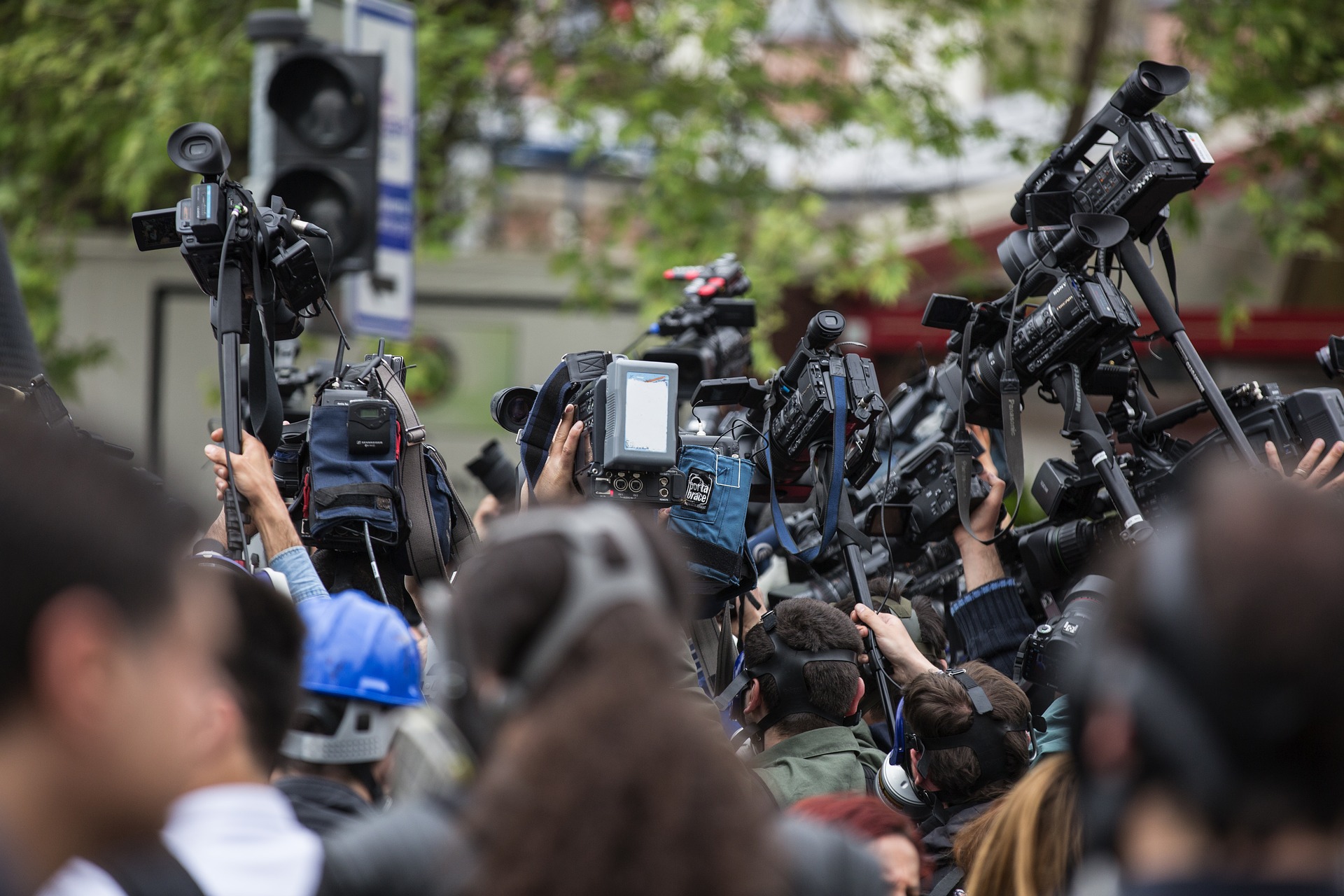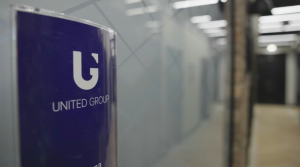Freedom of the press is not a perk of democracy. It is democracy itself
This article is part of a series published by IPI and written by expert guest contributors from across Europe on different threats facing media freedom and independent journalism. This article focuses on the recent increase of pressure and violence against journalists in Serbia amidst the government response to nationwide student-led protests. The views of the author do not necessarily reflect those of IPI.
In Serbia, journalists are working under duress. They are being berated, bullied, spied on and even physically assaulted. In the field they are insulted, intimidated and attacked. On TV, they are targeted by the top public officials of the country, including President Vučić himself.
This is a textbook example of censorship, with all pressure tactics in full view, seeding and instigating a hostile environment for professional journalists and media workers.
Press freedom is under fire, but the EU keeps mostly silent. Deals to be made, stability to be protected? At what cost?
Meanwhile, Serbia just scored its lowest points in the 23-year history of the World Press Freedom Index.
“Media freedom in a state of emergency”, concluded the latest report by Media Freedom Rapid Response (MFRR), underlining alarming findings about the deteriorating state of press and media freedom in Serbia.
Chilling data
The data is shocking. In a country with complete impunity for the murders of three prominent Serbian journalists between 1994 and 2001, the Independent Journalists Association of Serbia (NUNS) recorded 123 incidents against journalists, among these 15 physical attacks, 71 pressures and 34 verbal threats, just since the beginning of 2025.
The most recent attacks occurred during a rally organised by Serbia’s ruling party, the Serbian Progressive Party (SNS). in the city of Niš on May 17. The correspondent of Australian radio SBS, Nikola Doderović, was detained while reporting and kept for questioning for more than an hour and a half before being released.
Tamara Radovanović, journalist of Južne Vesti, was attacked. Instead of removing the attacker from the scene, the police instead removed the journalist, preventing her from continuing to report.
“The image of the assailant is clearly visible on the video and the fact that the police did not approach him, identify him and take him into custody, instead of preventing the journalist from continuing to do her job, underlines that is has become a rule that after an attack, thugs are more protected than victims”, said Veran Matić, chairperson of the management board of the Association of Independent Electronic Media (ANEM). “In the past six months alone, there have been more than 20 physical attacks on journalists. None of them have been legally punished. That only encourages attackers
While covering a public event organised by SNS in a village near Kosjerić, on May 16, N1 cameraman Marjan Vučetić, was attacked from behind with blows to his back and neck. He was then physically ejected from the tent in which the event was taking place. In attendance at the event on May 16 was ruling SNS party President, Miloš Vučević, who was visiting the village. The event organiser, SNS, did not react to stop the attack on the cameraman.
On the same day, photojournalist Gavrilo Andrić was detained by police while covering citizens’ protests in front of the courthouse in Novi Sad. Although he was released after two hours, he was prevented from doing his job and from documenting current events.
Commenting on this most recent event, Matić told IPI that “Depriving media workers of their freedom speaks most directly of the intention not to allow the public to be informed about the events that most directly concern them. Objective and timely information is the only light in the darkness of disinformation.”
On May 7, shortly after World Press Freedom Day, editor-in-Chief of KoSSev, Tatjana Lazarević, experienced problems while filming pro-government protesters in Pionirski Park, opposite the Assembly of Serbia. A young man approached her in a confrontational manner, aggressively asking why she was filming. During the World Labor Day rallies, an Insajder TV journalist Stefan Miljuš was attacked while reporting on the event organized by the SNS.
“This is a real escalation and can be called a kind of war against journalists,” Matić concludes.
The attacks on media continue six months after tragedy first paralysed Serbia. In Novi Sad, the country’s second largest city, at the recently renovated and reopened railway station, a canopy collapsed and killed 16 people. Unwillingness by the authorities to take responsibility provoked young academics and students to respond. Blockades and protests broke out across the country calling for action against crime and corruption.
The government countered with accusations and smears against protesters, as well as violence by provocateurs and masked hooligans in an attempt to tarnish peaceful demonstrations. Top officials pushed back with a barrage of attacks in the pro-regime media, labelling students as traitors and foreign agents.
The government also organised ‘counter-demonstrations’, supported by former members of the notorious and disbanded Unit for Special Operations aka “Red Berets”, whose former members were sentenced for the killing of former prime minister Zoran Đinđić in 2003.
Journalist threatened for reporting on alleged us of a sonic weapon
At the largest protest in Serbian history on March 15, during a 16-minute silent vigil, a sound roared among the student protesters, forcing dispersion and causing panic. Citizens flooded hospitals seeking help. Several non-governmental organisations compiled a file with 3032 testimonies, supporting the claim that a sonic weapon had been used against peaceful protesters.
Already unprecedented and deeply alarming repression got even worse. The Serbian government labeled testimonies as spreading disinformation, with the Minister of Justice calling on prosecutors to act against those who “publish disinformation and intentionally cause panic among citizens.”
As the MFRR delegation was exiting Serbia on April 9, columnist Dejan Ilić, columnist at the news portal Peščanik, was detained and then later released for publicly expressing his opinion when asked on the possibility of transitional government as a solution.
President Vučić infamously stated that he “will personally file criminal charges against the prosecutor who refused to arrest journalists”.
Belarus scenario
‘We are moving quickly into the scenario of Belarus’, media professionals and experts often comment. In Serbian terms, this means we are back in the bloody period of the 1990s.
In a landscape of media capture and high levels of political influence over media, the main backers of the regime apparatus are propaganda machines, TV stations with national broadcasting licenses, who for years have specialised in intimidation campaigns against investigative journalists who factually criticise the government. TV shows, whose regular guests include persons convicted of war crimes and sympathisers of the former president of Serbia, Slobodan Milošević, who led the country into regional wars in the 1990s.
Broadcasting licenses are issued and programs monitored by the Regulatory Body for Electronic Media (REM), a watchdog for the government, and a nightmare for professional media.
Even laws intended to professionalise the deeply partisan and pro-government Council of REM, failed. During the New Year holiday weeks, the government tried to push their candidates by violating the law, yet simulating a democratic process in the Parliament of Serbia.
RTS blockades
As a result of two weeks of intensive yet exhausting student blockades of the Serbian Broadcasting Corporation (RTS) building which demanded a new call for election of the REM Council – the government acceded on April 28.
Saša Mirković, who previously withdrew his candidacy due to procedural illegalities by the authorities, told IPI he was skeptical about whether it is worth participating again:
“To be completely honest, this is Pyrrhic victory. According to the behavior of the majority of deputies, what they said at the session of the Parliamentary Committee for Culture and Information where a new competition was announced, it was clearly seen that there is not the slightest desire for that process to go in the direction of electing competent and independent experts who will make decisions in the interest of the public in the Council of REM.”
Mirković is not the only one who believes that this was a move by the authorities ahead of the arrival in Belgrade on April 30 of Marta Kos, European Commissioner for Enlargement, in order to create the appearance of goodwill and constructive intentions. But, in the end, he expects that the decision to again elect government loyalists will be pushed through regardless.
The public broadcaster, RTS-long considered a state-captured broadcaster by media freedom experts, took months to issue a single report on the protests and then called the students ‘Nazis’.
Some RTS workers, through their informal group Naš protest, joined the student blockades demanding the resignation of all editors and journalists who did not respect media laws and the Code of Journalists, truthful reporting and independent work. They demanded an immediate change in editorial policy.
Euronews Serbia then issued an unsigned press release denouncing the protests in front of RTS headquarters, using language such as “torture”, “camps”, “persecution” and “street justice”. All pro-regime tabloids backed Euronews Serbia’s call and the president of the Serbian Parliament thanked them.
As many as 78 journalists and media workers of Euronews Serbia then publicly disassociated themselves from the unsigned press release. Euronews Serbia began broadcasting in 2021 and is the first news channel to be 100 per cent owned by a subsidiary of state-owned Telekom Serbia, a telecommunications giant headed by government loyalists.
Pressures and harassment of journalists continues unabated. The European Federation of Journalists (EFJ) and the Independent Journalists’ Association of Serbia (NUNS) recently expressed “deep concern over the serious pressure and violations of professional standards to which journalists and media workers at Euronews Serbia have been subjected for months”.
More widely, Telekom has for years been fighting the privately-owned SBB cable network on the Serbian cable market. Recently, the SBB cable network and channel package was sold to PPF Telecom, which then immediately sold the channel package to Telekom Serbia, who in turn dropped the United Media Group TV channels N1 and Nova from the cable channel package. This further limits the accessibility of independent television reporting in Serbia.
Elsewhere, for the first time in the 121-year history of the Serbian legacy media daily Politika, two important editorial positions are about to be terminated and two editors to be fired.
The editor of the Weekend edition of “Politika”, Sandra Gucijan, and the justice affairs editor Dorotea Čarnić, will be sacked as of May 20. The two editors had expressed support for the student protests on their private social media accounts and it is apparent that these are politically motivated disciplinary actions and a warning to their colleagues.
Both veteran editors, Gucijan and Čarnić did not receive any written warning but only a verbal statement that the current owner of Politika, Boban Rajić, close associate of the ruling party SNS, had decided that their positions were no longer required.
Spyware threats continue
These instances of physical violence and institutional pressure are merely broken fragments of a wider mirror of the Serbian media reality. As well as physical threats, journalists are also facing threats to their digital security.
In December 2024, Amnesty International published a report documenting the surveillance of activists and journalists by the state security apparatus using the Cellebrite forensic software.
“Security experts at Google confirmed our findings and discovered another significant number of devices that were infected”, said Jelena Sesar, researcher for the Balkans and European Union, at Amnesty International.
Despite fervent denial by the Serbian government, Cellebrite earlier this year suspended the use of its software by the Serbian authorities. Illegal surveillance continued.
The latest Amnesty International investigation, published in March, revealed that two journalists from Balkan Investigative Reporting Network (BIRN), an award-winning Serbian network of investigative journalists, were targeted with NSO Group’s Pegasus spyware. Forensic testing showed how the two female journalists – one of whom was Jelena Veljković – had both received messages on February 14 containing fake links, which if clicked would have infected the phone with Pegasus.
The use of spyware to target investigative journalists in Serbia is prohibited as a criminal offense under the country’s Criminal Code.
A worsening climate
As state repression of the student-led protests continues, attacks and threats against the media continue in Serbia with increasing volatility.
Arbitrary arrests of journalists are becoming worryingly commonplace. Supporters of the ruling political party are violently attacking media workers with impunity. Editors speaking out in favour of the reform agenda of the protests are being fired. Open censorship continues.
Rather than abating, these threats continue to increase and media freedom in Serbia remains in a state of freefall, with worrying implications for Serbian democracy and its potential EU accession.
Without solidarity and support, press freedom and independent journalism in Serbia faces erasure.
Source: IPI



